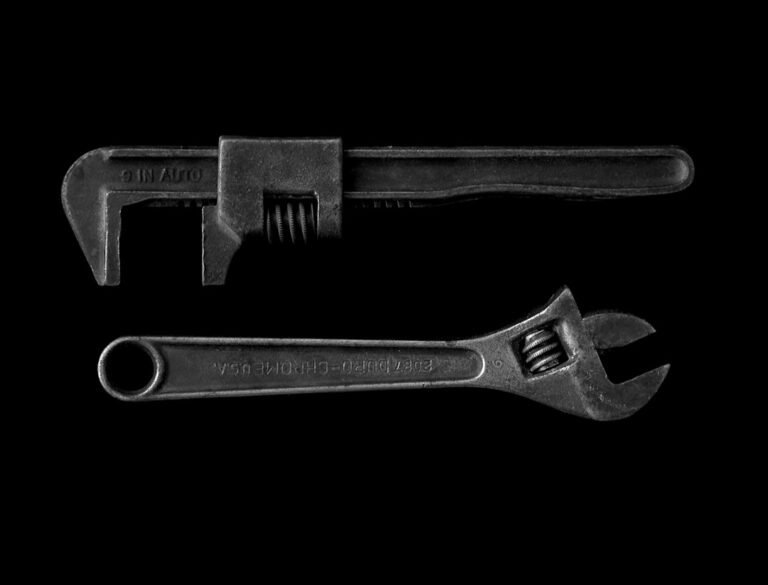In the modern, fast-paced environment, optimizing efficiency is essential for both individuals and organizations. Timely task completion, process streamlining, and effective data management are key factors that significantly impact productivity and success. The implementation of appropriate tools, machines, automation, and technology can lead to maximum efficiency across various work and life domains.
This article examines critical productivity tools, process-streamlining machines, time-saving automation tools, data management and analysis technologies, and ergonomic equipment designed for comfort and health. Understanding and incorporating these tools and machines enables individuals and businesses to enhance their workflow and achieve objectives more effectively.
Key Takeaways
- Maximizing efficiency is crucial for productivity and success in any industry.
- Essential tools for productivity include project management software, communication tools, and time tracking apps.
- Machines such as printers, scanners, and label makers can streamline processes and save time.
- Automation tools like chatbots, email autoresponders, and scheduling software can help save time and reduce manual tasks.
- Technology for data management and analysis, such as CRM systems and data visualization tools, can improve decision-making and efficiency.
- Ergonomic equipment like standing desks, ergonomic chairs, and wrist rests can improve comfort and health in the workplace.
- Implementing the right tools and machines is essential for achieving maximum efficiency in any business or organization.
Essential Tools for Productivity
Digital Tools for Productivity
When it comes to maximizing efficiency, having the right tools at your disposal is essential. Digital calendars, such as Google Calendar or Outlook, allow users to schedule appointments, set reminders, and share their schedules with others. Task management apps like Trello or Asana enable users to create and assign tasks, set deadlines, and track progress. Project management software, such as Jira or Basecamp, provides a centralized platform for teams to collaborate on projects, manage tasks, and track project timelines. Communication tools like Slack or Microsoft Teams facilitate real-time communication and collaboration among team members.
Physical Tools for Efficiency
In addition to digital tools, physical tools can also play a significant role in maximizing efficiency. For example, having a comfortable and functional workspace with ergonomic furniture and accessories can contribute to improved focus and productivity. Quality office supplies, such as pens, notebooks, and organizers, can help individuals stay organized and efficient in their daily tasks.
Creating an Efficient Work Environment
Furthermore, having access to high-speed internet, reliable computers, and mobile devices can ensure that individuals can work efficiently without technical interruptions. By investing in essential tools for productivity, individuals can create an environment that supports their workflow and enables them to work more effectively. By utilizing these essential tools for productivity, individuals and teams can stay organized, focused, and efficient in their work.
Machines for Streamlining Processes
In many industries, machines play a crucial role in streamlining processes and increasing efficiency. From manufacturing and production to logistics and transportation, the use of machines can significantly reduce manual labor and accelerate the pace of work. For example, in manufacturing plants, automated assembly lines and robotic arms can perform repetitive tasks with precision and speed, leading to higher production output and reduced labor costs.
In the transportation industry, automated conveyor systems and forklifts can streamline the movement of goods within warehouses and distribution centers, optimizing the supply chain process. Additionally, in the healthcare sector, medical imaging machines and diagnostic equipment can provide accurate and timely results, enabling healthcare professionals to make informed decisions quickly. By leveraging machines for streamlining processes, businesses can achieve higher levels of productivity and efficiency in their operations.
Furthermore, machines equipped with advanced technology, such as artificial intelligence (AI) and machine learning, can further enhance process efficiency. For example, AI-powered robots can be programmed to perform complex tasks in manufacturing or logistics, reducing the need for human intervention and minimizing errors. Machine learning algorithms can analyze large datasets to identify patterns and trends, enabling businesses to make data-driven decisions and optimize their processes.
Additionally, smart machines with internet connectivity can provide real-time monitoring and remote control capabilities, allowing operators to manage processes from anywhere. By embracing machines with advanced technology for streamlining processes, businesses can stay ahead of the competition and achieve greater efficiency in their operations.
Automation Tools for Time-Saving
| Tool | Time-Saving Feature |
|---|---|
| Zapier | Automates repetitive tasks across different apps |
| IFTTT | Creates automated workflows based on triggers |
| Microsoft Power Automate | Integrates with Microsoft 365 and other apps for workflow automation |
| AutoHotkey | Automates repetitive tasks on Windows |
Automation tools are invaluable for saving time and increasing efficiency in various aspects of work. Whether it’s automating repetitive tasks, managing workflows, or integrating systems, automation tools can help individuals and businesses streamline their operations. For example, email automation tools like Mailchimp or HubSpot enable users to create automated email campaigns, schedule emails, and track engagement metrics without manual intervention.
Workflow automation platforms like Zapier or Integromat allow users to connect different apps and automate data transfer between them, eliminating the need for manual data entry. Moreover, integration platforms like Microsoft Power Automate or Workato enable businesses to integrate their systems and automate business processes across different departments. By leveraging automation tools for time-saving, individuals and businesses can focus on more strategic tasks while repetitive processes are handled efficiently.
In addition to task automation, robotic process automation (RPA) has gained popularity in recent years for its ability to automate repetitive tasks traditionally performed by humans. RPA software can mimic human actions within digital systems to execute tasks such as data entry, form filling, and report generation. By implementing RPA, businesses can reduce human error, increase process speed, and free up employees to focus on higher-value activities.
Furthermore, RPA can be integrated with other automation tools and systems to create end-to-end automated workflows across different business functions. By embracing automation tools for time-saving, individuals and businesses can optimize their productivity and achieve more in less time.
Technology for Data Management and Analysis
In today’s data-driven world, technology plays a critical role in managing and analyzing vast amounts of data for informed decision-making. From data storage solutions and analytics platforms to business intelligence tools and visualization software, there are various technologies available to help individuals and businesses make sense of their data. Cloud storage solutions like Google Drive or Dropbox provide secure storage for large volumes of data, enabling users to access their files from anywhere with an internet connection.
Analytics platforms such as Google Analytics or Adobe Analytics offer insights into website traffic, user behavior, and marketing performance, empowering businesses to optimize their online presence. Business intelligence tools like Tableau or Microsoft Power BI enable users to create interactive dashboards and reports to visualize and analyze data from multiple sources. By leveraging technology for data management and analysis, individuals and businesses can gain valuable insights that drive informed decision-making.
Moreover, advanced technologies such as artificial intelligence (AI) and machine learning are revolutionizing the way data is managed and analyzed. AI-powered data management platforms can automate data cleansing, normalization, and categorization processes, ensuring that data is accurate and consistent. Machine learning algorithms can analyze large datasets to identify patterns, trends, and anomalies that may not be apparent through traditional analysis methods.
Additionally, predictive analytics models powered by AI can forecast future trends and outcomes based on historical data, helping businesses anticipate market changes and make proactive decisions. By harnessing technology for data management and analysis, individuals and businesses can unlock the full potential of their data assets and gain a competitive edge in their respective industries.
Ergonomic Equipment for Comfort and Health

Designing for Comfort and Reducing Physical Strain
In the pursuit of maximum efficiency, it’s essential to prioritize ergonomic equipment for comfort and health in the workplace. Ergonomic furniture, such as adjustable desks, ergonomic chairs, and monitor stands, is designed to support proper posture and reduce physical strain during long hours of work. Standing desks offer the flexibility to switch between sitting and standing positions, promoting movement and reducing the negative effects of prolonged sitting.
Enhancing Posture and Reducing Musculoskeletal Disorders
Ergonomic chairs with lumbar support and adjustable armrests help maintain a healthy posture while sitting for extended periods. Monitor stands elevate computer screens to eye level, reducing neck strain and eye fatigue. By investing in ergonomic equipment for comfort and health, individuals can minimize the risk of musculoskeletal disorders and maintain their well-being while working.
Additional Ergonomic Accessories for Enhanced Comfort
Furthermore, ergonomic accessories such as keyboard trays, wrist rests, and footrests can enhance comfort and reduce the risk of repetitive strain injuries. Keyboard trays allow users to adjust the keyboard position to maintain a neutral wrist posture while typing. Wrist rests provide support for the wrists during keyboard use, reducing pressure on the median nerve and preventing carpal tunnel syndrome. Footrests elevate the feet to promote proper leg alignment while sitting, improving circulation and reducing lower back pressure.
Creating a Conducive Work Environment
Additionally, ergonomic lighting solutions such as task lights or adjustable desk lamps can minimize glare and eyestrain while working in dimly lit environments. By incorporating ergonomic equipment for comfort and health into the workplace, individuals can create a conducive environment that supports their well-being and productivity.
Implementing Tools and Machines for Maximum Efficiency
In conclusion, maximizing efficiency requires a strategic approach that involves implementing the right tools and machines across various aspects of work and life. Essential tools for productivity such as digital calendars, task management apps, project management software, communication tools, as well as physical office supplies are instrumental in keeping individuals organized and focused on their tasks. Machines play a crucial role in streamlining processes across different industries through automation tools equipped with advanced technology such as AI and machine learning that further enhance process efficiency.
Automation tools are invaluable for saving time by automating repetitive tasks traditionally performed by humans while technology plays a critical role in managing vast amounts of data through cloud storage solutions analytics platforms business intelligence tools visualization software AI-powered data management platforms machine learning algorithms predictive analytics models that help businesses gain valuable insights that drive informed decision-making. Moreover ergonomic equipment such as adjustable desks ergonomic chairs monitor stands standing desks keyboard trays wrist rests footrests ergonomic lighting solutions are designed to support proper posture reduce physical strain enhance comfort reduce the risk of repetitive strain injuries minimize the risk of musculoskeletal disorders maintain well-being while working. By understanding implementing these tools machines individuals businesses can optimize their workflow achieve their goals more effectively ultimately leading to increased productivity success in their respective endeavors.
If you’re interested in learning more about the latest advancements in tools and machinery, be sure to check out this article on the preparations and highlights of the 66th Grammy Awards at Crypto.com Arena. This article discusses the cutting-edge technology and equipment used to put on a spectacular show for music’s biggest night.
FAQs
What are tools machines?
Tools machines are devices that are used to perform various tasks such as cutting, shaping, drilling, and finishing materials like wood, metal, and plastic. These machines are powered by electricity, hydraulics, or pneumatics and are essential in manufacturing and construction industries.
What are the different types of tools machines?
There are various types of tools machines, including lathes, milling machines, drills, saws, grinders, and CNC machines. Each type of machine is designed for specific tasks and materials, and they come in different sizes and configurations to suit different applications.
What are the advantages of using tools machines?
Using tools machines can increase productivity, accuracy, and efficiency in various manufacturing and construction processes. These machines also enable the automation of repetitive tasks, leading to cost savings and improved quality of the finished products.
What safety precautions should be taken when using tools machines?
It is important to follow safety guidelines and use personal protective equipment when operating tools machines. This includes wearing safety goggles, gloves, and ear protection, as well as ensuring that the machines are properly maintained and operated according to the manufacturer’s instructions.
How can tools machines be maintained?
Tools machines should be regularly inspected for any signs of wear and tear, and maintenance tasks such as lubrication, cleaning, and calibration should be performed as recommended by the manufacturer. It is also important to address any issues or malfunctions promptly to prevent accidents and ensure the longevity of the machines.




















+ There are no comments
Add yours